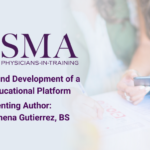Abstract | May 6, 2021
Foundation and Development of a Virtual Educational Platform
Learning Objectives
- Discuss possibilities for community engagement during the COVID-19 pandemic;
- Compare and contrast the results of an organization before and after implementing quality improvement principles.
Introduction:
PhysioCamp is a nonprofit organization that has been engaged in K-12 tutoring and educational projects for the past several years, but these in-person efforts had to be paused due to the COVID-19 pandemic. In response to the continued educational barriers within the K-12 school system, PhysioCamp designed a virtual platform for free K-12 tutoring (TeleTutors) and educational sessions (TeleCamps), with the goal of improving learning achievements.1 TeleTutors achieved the original goal of designing a safe program by August 15th of 2020. By the start of the 2021 Fall semester, we aim to increase the number of K-12 students by 50% compared to at the start of the 2021 Spring semester.
Methods:
Upon creating our current model of functioning for TeleTutors and TeleCamps, we applied change management principles and a systems approach in adjusting organizational structure, responsibilities, and procedures.2 After the pilot launch of TeleTutors in Spring of 2020, we created a virtual training process for volunteer tutors, which includes background checks, and a database where all up-to-date information is kept. We implemented ‘after session feedback’ forms for volunteers to provide updates, and an optional survey for tutees to provide general background information and feedback on the tutoring experience. Similar changes were also applied to TeleCamps, with a new tracking system and ‘after session feedback’ forms given after each session. Operational responsibilities were delegated among a team of interprofessional board members and interns, including correspondence, tutor training and matching, data management, and research. Promotional, Technical, and Volunteer Committees also provided support services for TeleTutors.
Results:
In Spring 2020, the initial transition from in-person activities to TeleTutors involved only local advertising, no background check requirement to volunteer, and tutor training consisted of matching students with a tutor without consistent follow-up.
Spring Semester of 2020 results:
- K-12 Students Enrolled: 14
- Volunteers Tutors Signed Up: 69
- Tutor-Tutee Matches: 14
- Lost to follow-up over the summer: 14
Over the Summer of 2020 various adjustments to the program included implementing organizational changes,
performing background checks on volunteers, virtual training, an updated database, and volunteer advertising to
over 200 colleges/locations across the US.
Start of Spring Semester of 2021 results:
K-12 Students Enrolled: 42 total enrolled; 39 currently active
Volunteers Tutors: >700 signed up, >100 completed background checks and training.
Total Tutor-Tutee Matches: 46 total; 42 currently active (some individual students matched to multiple tutors)
During the Summer and Fall of 2020, PhysioCamp also worked to reformat previous in person presentations to be better suited for online delivery. Unlike the individualized tutoring format, TeleCamps were designed to allow and encourage multiple students to participate virtually. TeleCamp sessions include short interactive lecture style presentations focusing on specific educational topics, combined with interspersed activities to help engage the learners. The pilot period for these sessions were started part way through the Fall 2020 semester, and were restricted to high school students to begin with.
Start of Spring Semester of 2021 results:
- Total sessions: 5
- Participant: High School -11
- Volunteers: >400 signed up, >60 completed background check and training (Including 8 graduate level instructors); Only graduate level instructors have been used to teach camps so far.
Discussion:
Initial participation from tutors and tutees has continued to grow in proportion to our advertising efforts, and suggests a positive effect of the changes that were implemented. We initially focused our advertising efforts on ensuring we had enough volunteer tutors. As more tutors complete background checks and are trained, we will continue to expand our advertising efforts towards K-12 students and parents, especially within disadvantaged and underserved communities.
Analysis of data gathered through future survey responses will offer more objective information regarding the impact the program has on the community and possible areas for improvement. Data about similar projects surrounding COVID is still emerging, and will continue to be referenced when making improvements of our program in the future.
Conclusion:
The program’s leadership has made the necessary adjustments that allowed the program to operate effectively in the constantly changing environment of COVID-19. Quality improvement of management and operations at an organizational level have led to improved impact for the target community.
References and Resources:
- Hai-Anh Dang, F. Halsey Rogers (2008) The Growing Phenomenon of Private Tutoring: Does It Deepen Human Capital, Widen Inequalities, or Waste Resources?, The World Bank Research Observer, Volume 23, Issue 2, Fall 2008, Pages 161–200, https://doi.org/10.1093/wbro/lkn004
- Belson, David (2016) Quality Improvement Methods For use in QUERI research proposals and grant projects. https://www.queri.research.va.gov/implementation/quality_improvement/QI_Methods.pdf

